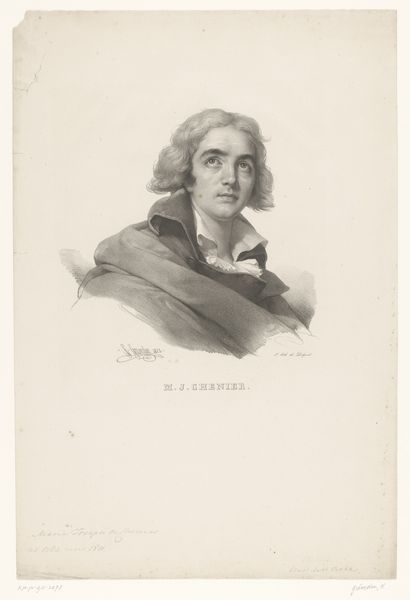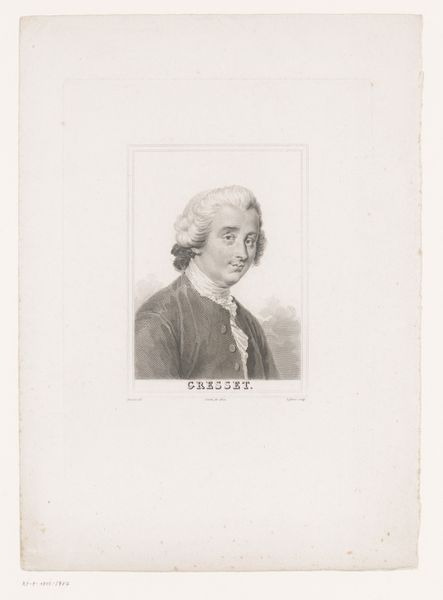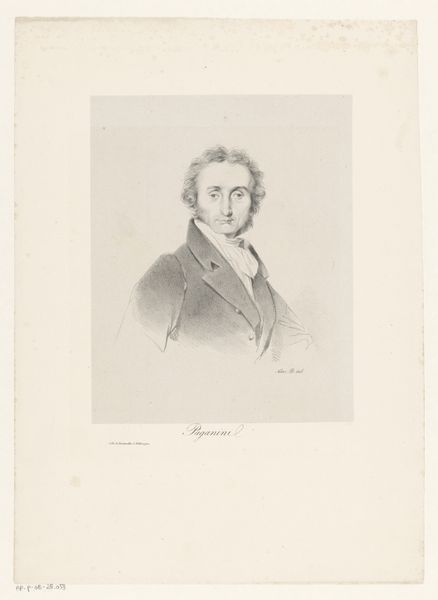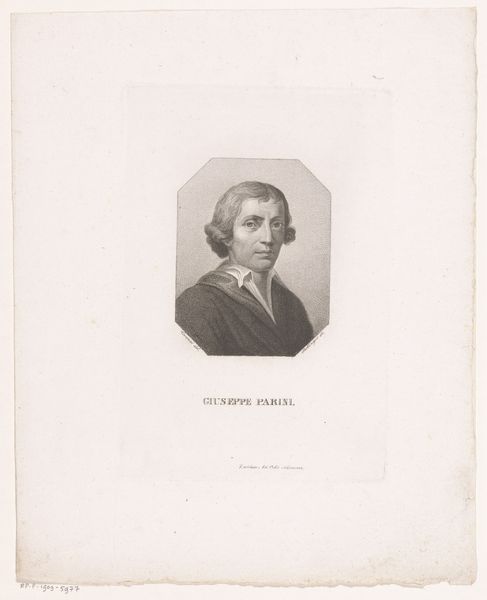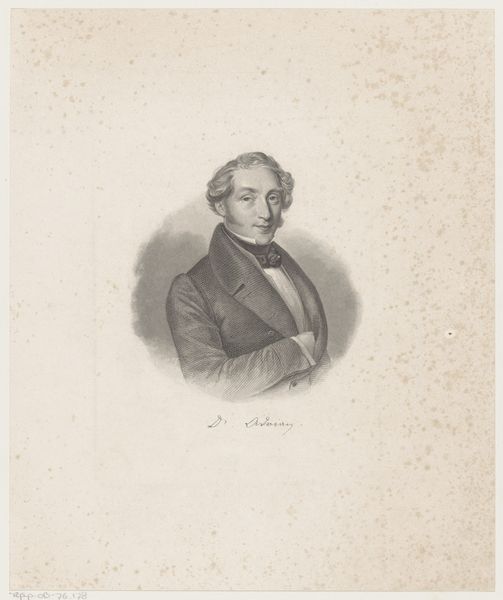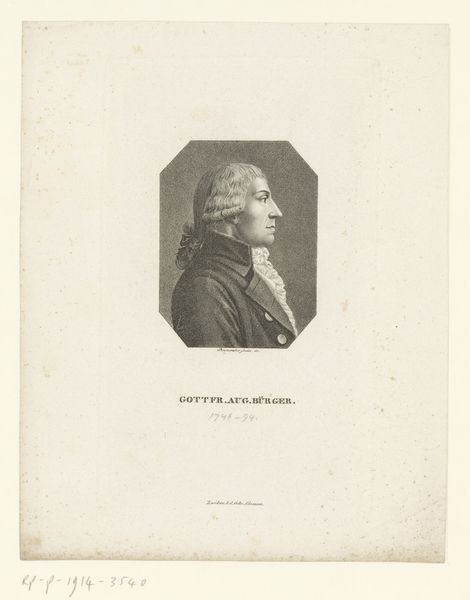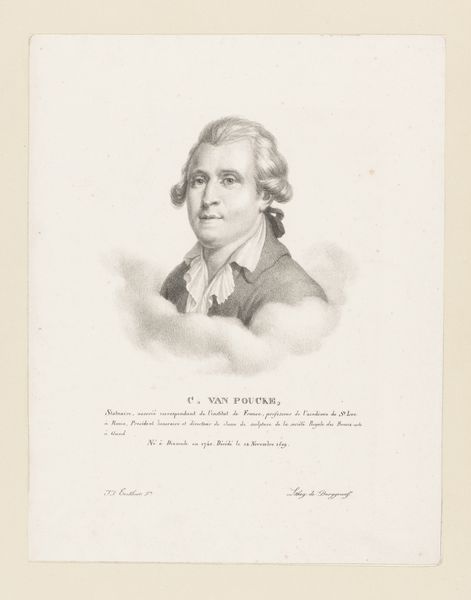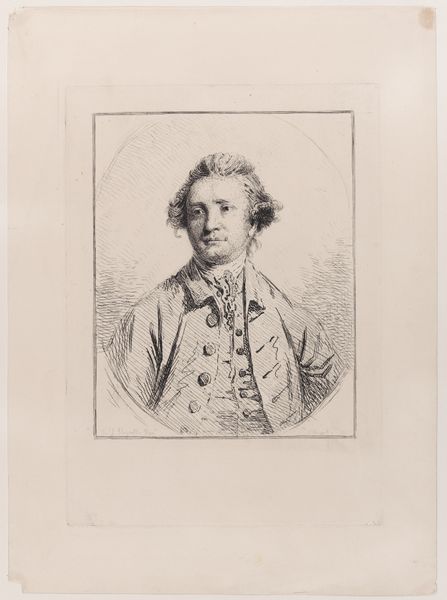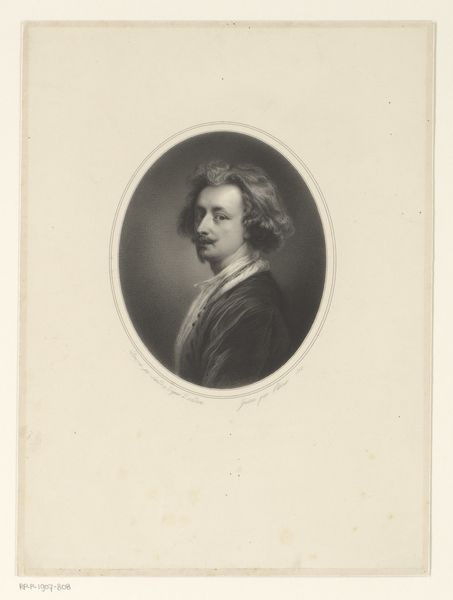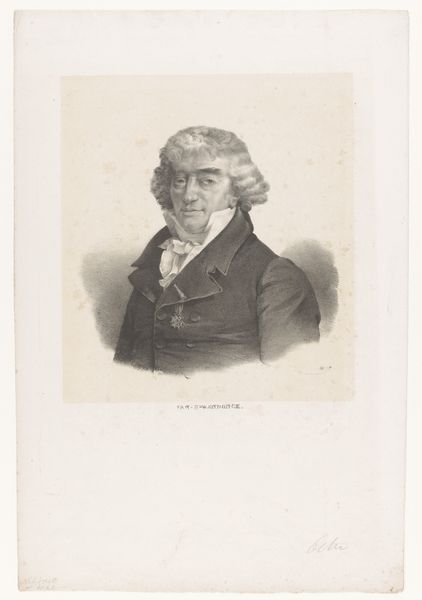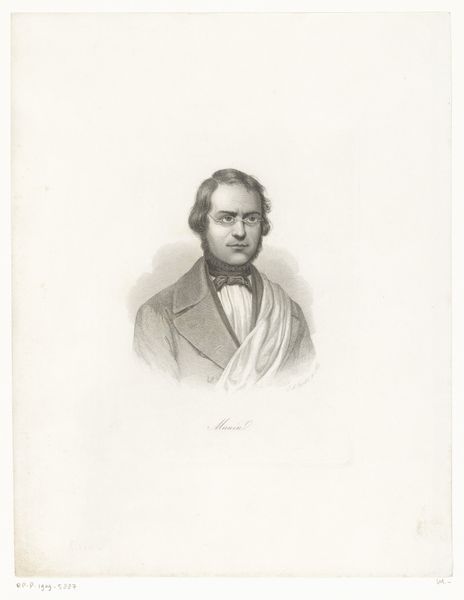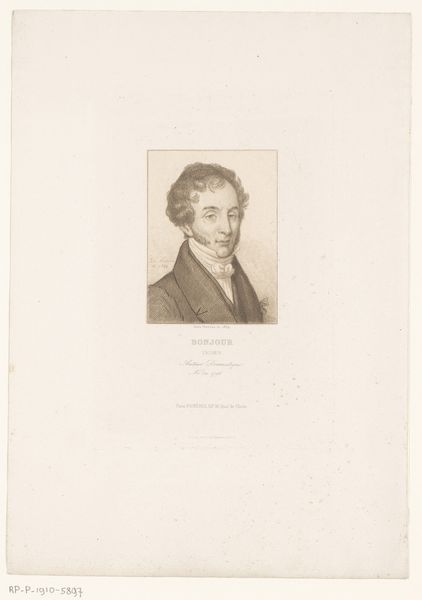
print, paper, engraving
#
portrait
#
neoclacissism
# print
#
paper
#
academic-art
#
engraving
Dimensions: height 494 mm, width 327 mm
Copyright: Rijks Museum: Open Domain
Editor: This is Jean Pierre Sudre’s “Portrait of Marie-Joseph Chénier,” an engraving from 1826, currently held at the Rijksmuseum. I find the gaze of the subject very striking – there’s an upward, almost pleading quality to it. What do you see in this piece, from an art historical perspective? Curator: Well, it’s hard to ignore the context. Chénier was a playwright and a prominent figure during the French Revolution. Knowing that, his upward gaze takes on a whole new meaning. It's not just a portrait; it’s a representation of a person caught in the tumult of radical change. How do you think the artist is trying to portray Chenier’s political stance at the time? Editor: I hadn't thought of that! The almost romantic style feels contradictory. Given he was a revolutionary, shouldn’t the portrait convey more strength or defiance? Curator: Exactly. That tension, between the softer Neoclassical aesthetic and the revolutionary subject, speaks volumes. It highlights the complexities of identity in a period defined by upheaval. Was Chenier a man of the Enlightenment, conflicted by the terror? This engraving is from after his death. Is it an attempt to solidify or perhaps sanitise his image? Editor: It’s like the artist is intentionally trying to reconcile these opposing forces through the portrait itself. By using soft lines for someone who was so deeply involved in politics, the artist perhaps hoped to capture all sides of him, and how nuanced his identity actually was. Curator: Precisely! It's a subtle form of activism, perhaps challenging the oversimplified narratives surrounding the Revolution and the people within it. This artwork allows us to reconsider that historical period with sensitivity to the intricacies of social change. It's important to remember history isn’t one dimensional, just as people aren’t. Editor: I now look at the piece in a different light; considering this work as an active attempt to address a highly debated time. Curator: That’s precisely why it's crucial to question and understand the historical, cultural and societal environment which an artist conveys through the subject and art itself.
Comments
No comments
Be the first to comment and join the conversation on the ultimate creative platform.
